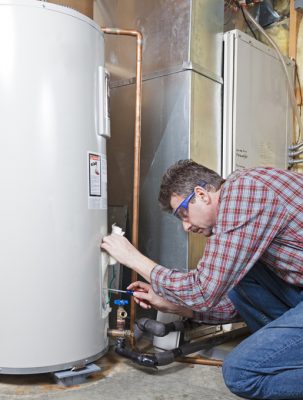Caring for Your Home's Hot Water System: Essential Tips
Click For More InformationHow do you feel about Tips on Maintaining a Water Heater?

Hot water is necessary for daily comfort, whether it's for a revitalizing shower or washing recipes. To ensure your warm water system runs efficiently and lasts much longer, regular maintenance is vital. This article offers sensible suggestions and understandings on how to keep your home's hot water system to prevent disruptions and expensive fixings.
Intro
Preserving your home's warm water system might seem overwhelming, but with a few straightforward actions, you can guarantee it runs smoothly for many years ahead. This guide covers whatever from comprehending your warm water system to DIY maintenance ideas and understanding when to employ professional assistance.
Value of Keeping Your Hot Water System
Routine upkeep not just extends the life expectancy of your warm water system yet also ensures it runs successfully. Neglecting upkeep can lead to decreased efficiency, higher energy bills, and even early failing of the system.
Indicators Your Hot Water System Needs Maintenance
Understanding when your warm water system requires interest can stop significant concerns. Keep an eye out for indicators such as inconsistent water temperature, unusual noises from the heating unit, or rustic water.
Recognizing Your Warm Water System
Prior to diving right into upkeep jobs, it's valuable to comprehend the fundamental components of your hot water system. Typically, this consists of the water heater itself, pipes, anode rods, and temperature level controls.
Month-to-month Upkeep Tasks
Routine monthly checks can help capture small problems before they escalate.
Purging the Hot Water Heater
Purging your water heater removes debris accumulation, improving performance and lengthening its life.
Checking and Replacing Anode Rods
Anode poles stop rust inside the tank. Inspecting and changing them when worn is essential.
Evaluating and Readjusting Temperature Settings
Readjusting the temperature settings makes certain ideal performance and safety and security.
DIY Tips for Upkeep
You can do several upkeep tasks yourself to maintain your hot water system in top condition.
Looking for Leaks
Regularly examine pipelines and links for leaks, as these can bring about water damage and greater expenses.
Testing Pressure Alleviation Valves
Evaluating the pressure safety valve guarantees it works appropriately and stops excessive stress buildup.
Protecting Pipes
Shielding hot water pipelines reduces warmth loss and can save power.
When to Call a Professional
While do it yourself maintenance is helpful, some issues call for professional experience.
Complicated Concerns Requiring Expert Aid
Examples consist of major leaks, electric problems, or if your hot water heater is consistently underperforming.
Routine Specialist Maintenance Perks
Professional maintenance can consist of comprehensive examinations, tune-ups, and making certain compliance with security criteria.
Conclusion
Routine upkeep of your home's warm water system is important for effectiveness, long life, and cost savings. By adhering to these tips and understanding when to look for specialist help, you can make sure a trusted supply of hot water without unforeseen disturbances.
How to Maintain an Instant Hot Water Heater
Before tinkering with your hot water heater, make sure that it’s not powered on. You also have to turn off the main circuit breaker and shut off the main gas line to prevent accidents. Also turn off the water valves connected to your unit to prevent water from flowing into and out of the appliance. 2. When you’re done, you have to detach the purge valves’ caps. These look like the letter “T†and are situated on either side of the water valves. Doing so will release any pressure that has accumulated inside the valves while at the same time avoid hot water from shooting out and burning your skin. 3. When the purge valves’ caps are removed, you have to connect your hosing lines to the valves. Your unit should have come with three hoses but if it didn’t, you can purchase these things from any hardware or home repair shops. You can also get them from retail stores that sell water heating systems. Read the user’s manual and follow it to complete this task properly. When the hosing lines are connected, open the purge port’s valves. 4. You should never use harsh chemical cleaners or solutions when cleaning your unit. Make use of white vinegar instead. It should be undiluted and you’ll probably use about 2 gallons. 5. Now flush your water heater. This task should probably take about 40 minutes. We can’t give you specific directions for this because the procedure is carried out depending on the type, model and brand of your heater. With that being said, refer to the user’s manual. 6. When you’re done draining the unit, you have to turn off the purge port valves again. Remove the hosing lines that you earlier installed on each of the water valves. Put the valve caps (purge port) back in their respective places and be very careful so as not to damage the rubber discs that are found inside these caps. 7. Now that everything’s back in place, check your user’s manual again to find out how to reactivate your water heating system. 8. Once it is working, turn one of your hot water faucets on just to let air pass through the heater’s water supply pipes. Leave the tap on until water flows smoothly out of it. https://www.orrplumbing.com/blog/2014/september/how-to-maintain-an-instant-hot-water-heater/

I ran across that page about What Kind of Maintenance Do Water Heaters Need? when looking around the search engines. Loved our piece of writing? Please share it. Let other people discover it. We take joy in your readership.
Here